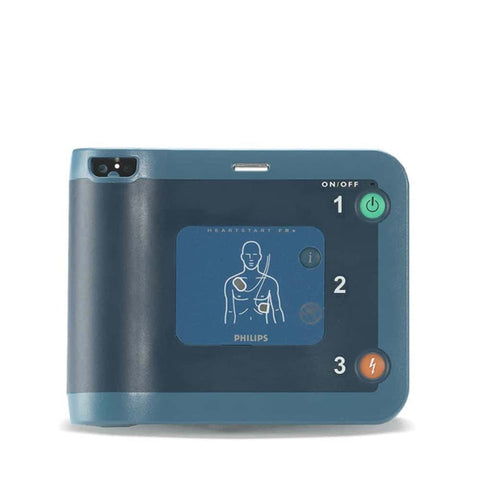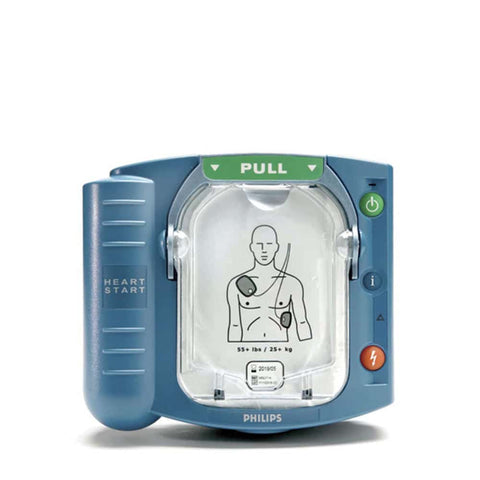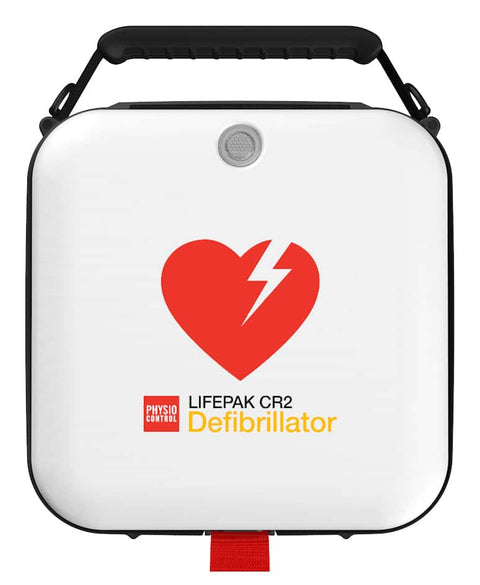You may be familiar with heart attacks, but what about sudden cardiac arrest? Sudden cardiac arrest (SCA) strikes without warning, affecting people of all ages and leaving devastating impacts on families and communities.
This October, AED First Response would like to recognize National Sudden Cardiac Arrest Awareness Month—a critical time to shed light on this often misunderstood medical emergency. Whether you are a parent, healthcare professional, elderly individual, or organization leader, understanding SCA can help save lives.
Our team here at AED First Response is passionate about spreading awareness about this issue and equipping communities with the knowledge they need to respond effectively. In this blog post, we'll explore what sudden cardiac arrest is, how it differs from a heart attack, who is at risk, survival rates, and what actions you can take during an SCA event. We’ll also discuss the life-saving potential of Automated External Defibrillators (AEDs) and the importance of having one in your organization. By the end, you'll be equipped with valuable insights to protect yourself and those around you.
Understanding Sudden Cardiac Arrest
Sudden cardiac arrest occurs when the heart suddenly stops beating due to an electrical malfunction. This disruption halts blood flow to the brain and other vital organs, rendering the victim unconscious and unresponsive within seconds. Unlike other medical conditions, SCA offers no warning signs, making it a silent and deadly threat.
The root cause of SCA is often linked to ventricular fibrillation, a rapid, erratic heartbeat that prevents the heart from pumping blood efficiently. Other causes may include structural heart abnormalities, severe physical stress, or inherited genetic conditions. Regardless of the cause, the outcome is the same— the victim typically becomes unresponsive and can die within minutes. Immediate intervention is crucial to prevent irreversible damage or death.
Symptoms Of Cardiac Arrest
As we stated earlier, SCA typically strikes without warning. In fact, nearly half of those who experience SCA report having no symptoms before losing consciousness. However, in some patients, they may experience symptoms such as heart palpitations, dizziness, or feeling faint prior to sudden cardiac arrest (SCA). Other potential signs and symptoms that may be reported by individuals who have experienced SCA include:
- Chest pain, discomfort, tightness, or pressure, particularly during physical exertion
- Unexplained shortness of breath, fatigue, or palpitations during physical exertion
- Elevated systemic blood pressure
The Distinction Between SCA and Heart Attack
While both SCA and heart attacks involve the heart, they are fundamentally different events. A heart attack, or myocardial infarction, occurs when a blockage in the coronary arteries restricts blood flow to a portion of the heart muscle. This blockage causes the affected tissue to die, leading to chest pain and other symptoms.
Conversely, SCA is an abrupt electrical malfunction that stops the heart entirely. There are no blockages involved, and the individual usually collapses without any prior warning or discomfort. This key distinction underscores the need for different responses—heart attacks require medical treatment to restore blood flow, while SCA necessitates immediate CPR and defibrillation.
Who Is Susceptible to Sudden Cardiac Arrest?
SCA does not discriminate—it can affect anyone, regardless of age or health status. However, certain risk factors can increase susceptibility. These include:
- Family history of SCA or heart disease
- Previous heart attacks or conditions like cardiomyopathy
- High blood pressure and cholesterol levels
- Lifestyle factors such as smoking, poor diet, and lack of exercise
Surprisingly, SCA also impacts younger populations. According to the American Heart Association, approximately 23,000 out-of-hospital cardiac arrests occur annually in youth under age 18. This statistic underscores the importance of being prepared, regardless of age or health status. Even a healthy child at soccer practice, a college student, or a young business professional can be susceptible to sudden cardiac arrest.
The Stark Reality of SCA Survival Rates
The survival rates for SCA are alarming. Out of the estimated 350,000 out-of-hospital cardiac arrests in the United States each year, only about 10% of victims survive. For each minute that passes without CPR or defibrillation, the chance of survival decreases by 7-10%. This stark reality emphasizes the critical need for immediate response to improve outcomes.
Early intervention, including bystander CPR and the use of an AED, can significantly increase survival rates. In fact, Studies indicate that when an AED is used within the first few minutes of a cardiac arrest, survival rates can increase to as high as 90%.
Immediate Actions During Sudden Cardiac Arrest
In the event of SCA, every second counts. Knowing what to do can make the difference between life and death. Here are the essential steps:
- Call 911 immediately to activate emergency medical services.
- Begin CPR by performing chest compressions at a rate of 100-120 per minute. Push hard and fast in the center of the chest.
- Use an AED (Automated External Defibrillators) if available.
Follow the device's instructions to deliver a shock to the heart, restoring its normal rhythm. Performing these actions rapidly and effectively can sustain life until professional help arrives. Keep reading to learn more about AEDs and defibrillation in the event of a sudden cardiac arrest.
The Role of Defibrillation and AEDs in Sudden Cardiac Arrest
One of the main ways to remedy a sudden cardiac arrest (SCA) event and save a life is through defibrillation. This process involves delivering an electric shock to the heart, temporarily halting its muscle activity and allowing it to generate a new electrical impulse to restore a normal rhythm. In essence, defibrillation can effectively restart someone's heart during an SCA episode.
Automated External Defibrillators (AEDs) play a vital role in this process.
These portable devices are designed to deliver these electric shocks and are equipped with user-friendly features, including voice prompts and visual aids. This guidance enables even untrained individuals to perform defibrillation quickly and effectively, which is crucial during emergencies.
The accessibility and ease of use of AEDs make them invaluable tools in the fight against SCA. Research indicates that prompt defibrillation within the first few minutes of an SCA event can significantly improve survival rates—by as much as double or even triple. In some cases, survival rates can reach as high as 90% when an AED is used in the first few minutes. This underscores the importance of having AEDs available in public spaces and ensuring that people know how to use them, as quick action can truly make the difference between life and death.
Educating Yourself and Your Community on Sudden Cardiac Arrest
Despite being invaluable tools for saving lives during sudden cardiac arrest, many people are still unaware of what AEDs are, how they work, and how to use them. That’s where education comes in.
Education is the first step toward saving lives at risk from sudden cardiac arrest (SCA). Whether you are a school teacher, gym coach, or HR manager, it’s essential to educate yourself, along with your family, friends, and colleagues, about SCA and its dangers, as well as what AEDs are and how to use them.
We encourage you to share this blog post, participate in training sessions, and advocate for the placement of AEDs in public spaces such as your church, gym, office, or school. Having an AED is a crucial first step, but the next step is implementing an AED program that trains staff to recognize the symptoms of SCA, perform CPR, and effectively use the device.
By taking these measures, we can help save lives and improve survival rates for sudden cardiac arrest.
If you’d like to learn more, contact AED First Response. We can help you determine which AED makes the most sense for your specific situation and connect you with local resources for AED training.







